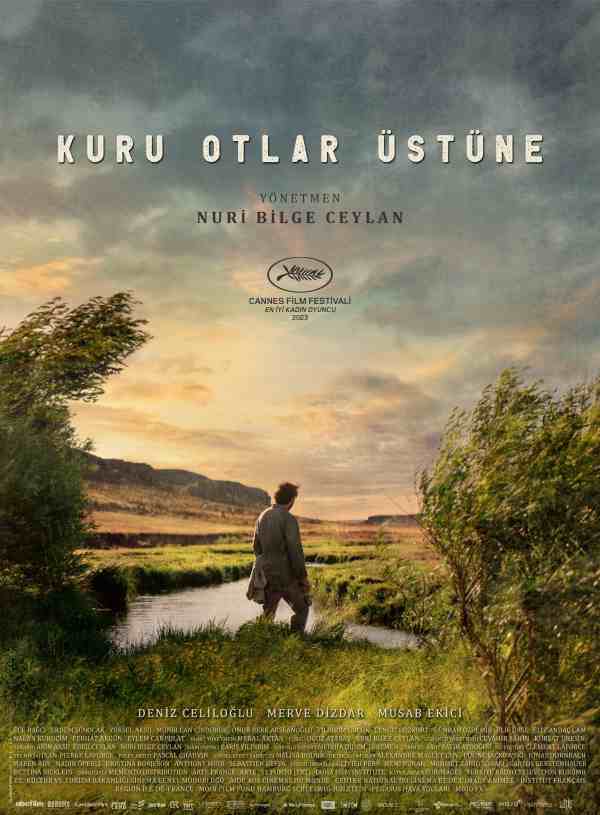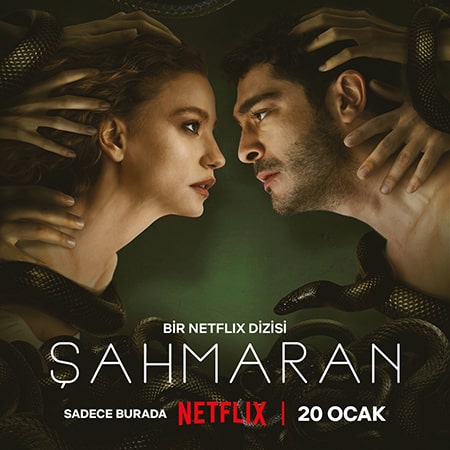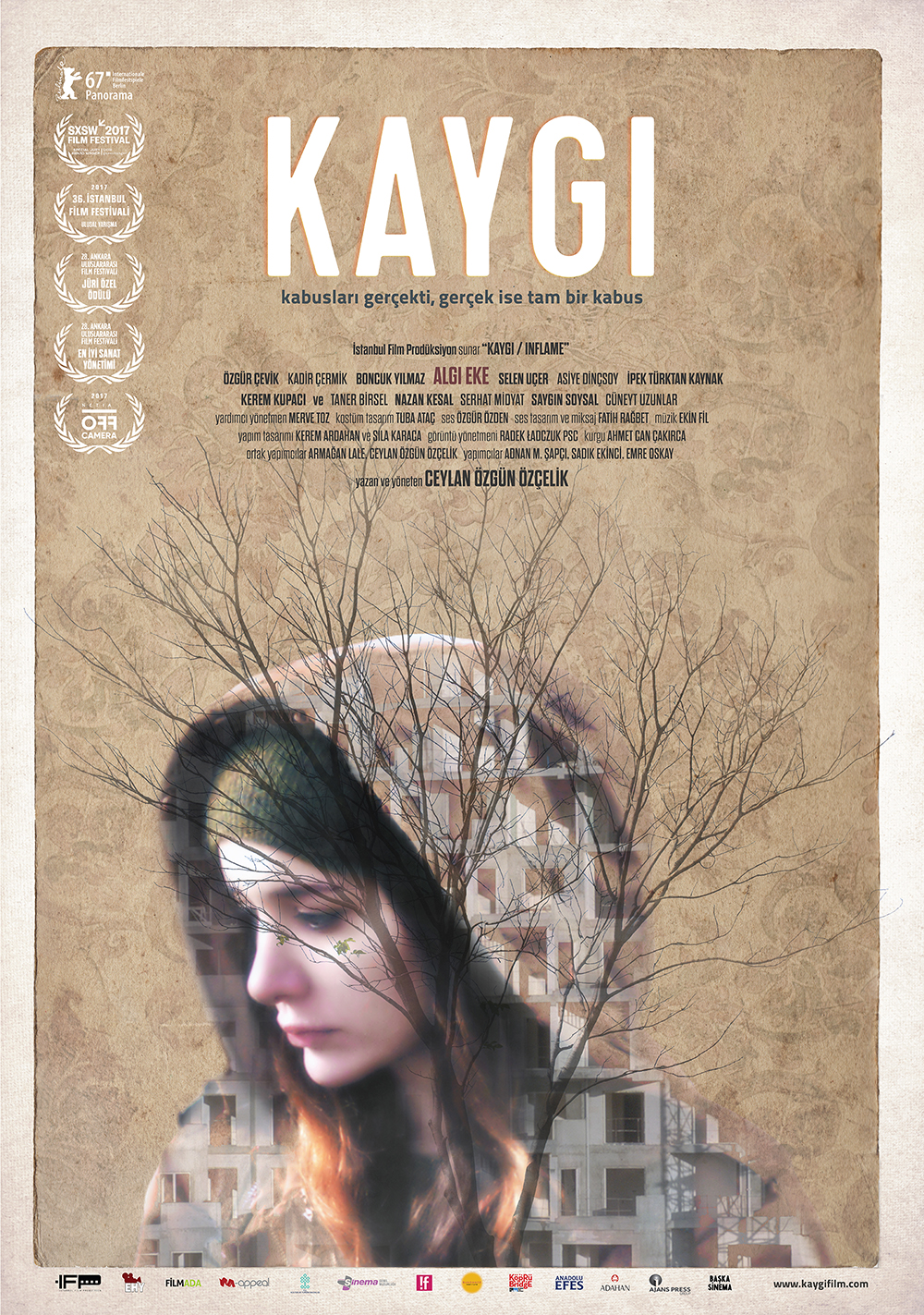Dünya Bu Filmi Konuşuyor projemizde Yağmur Kartal Karakuş’un Oyuncakçı–Saklı Yadigarlar filmini ele alıyoruz. Altıncı konuk yazarımız İran’dan Giti Mahmood. Mahmood ile birlikte Yönetmen’in de görüşlerini sunuyoruz.
Giti Mahmood Kimdir?
1973’te İran Azerbaycanı’nın Tebriz şehrinde doğdu. Fars Dili ve Edebiyatı Yüksek Lisans derecesi var. Ayrıca Tahran Radyo ve Televizyon Fakültesi’nde prodüksiyon eğitimi aldı. Asıl mesleği prodüktör olmakla birlikte aynı zamanda anlatıcı, editor, seslendirme sanatçısı, yönetmen ve yazar.
“Aynur” isimli, çocuklar ve gençlere yönelik hikaye kitabı 2000 yılında İran’da yayınlandı. Çeşitli üniversitelerde Fars Edebiyatı dersleri vermeye devam ediyor.
Portre fotoğrafçılığı alanında da çalışmaları bulunan Mahmood ayrıca mini golf spor koçluğu yapıyor.
Çeşitli festivallerde senaryo ve prodüksiyon dallarında ödüller kazanan Giti Mahmood halen İran devlet televizyonu IRIB’da özel yapım projelerde prodüktörlük yapıyor.
Bu film hibrit veya karma bir belgesel. Yaratıcı bir kuklacının hayat hikayesini Stop Motion animasyonu ile birleştiren bir yapım. Belki bir belgesel-kurgu olarak adlandırılabilir. Büyük ölçekte değerlendirdiğimde, yönetmen sanatçı ve yaratıcı bir insanın hayat hikayesini bize aktarabildi. Film, yaşını almış yetişkinlere yönelik. Onlar için nostaljik işler ve karakterlere yer verilmiş. İnsanlar için sonuçları değişen sosyal çevreye göre değişen etnografik bir anlatı.
Ana karakterin ölümüyle bu mirasın ortadan kalkacağına kesinlikle katılmıyorum. Bu kuklaları yapmak zor olmadığı için onları yöneten ruh bile modern insanlar için ilginç değil. Filmin hikayesi basit, kablodan yapılma kukla karakterler bize yaratıcılarının hayat hikayesini anlatmaya yardımcı oluyor. En iyi kısmı, bir kuklanın teknenin içinde satranç oynadığı kısım. Ve sanki satranç sahnesi hayat sahnesi ve hayat oyunuymuş gibi, bizi gerçek dünyadaki yaratıcıları yaşlı adamın oynadığı hayat oyununa bağlıyor.
Bu arada, neden bu filmde çocukları görmüyor ve bu kuklalar hakkındaki fikirlerini duymuyoruz? Oyuncaklar ve kuklalar, çocukların ve oyunların varoluş felsefesi değil mi? Bu film yetişkinler için olsa bile, çocuklar bu oyuncak bebek hakkında konuşsa daha iyi olurdu.
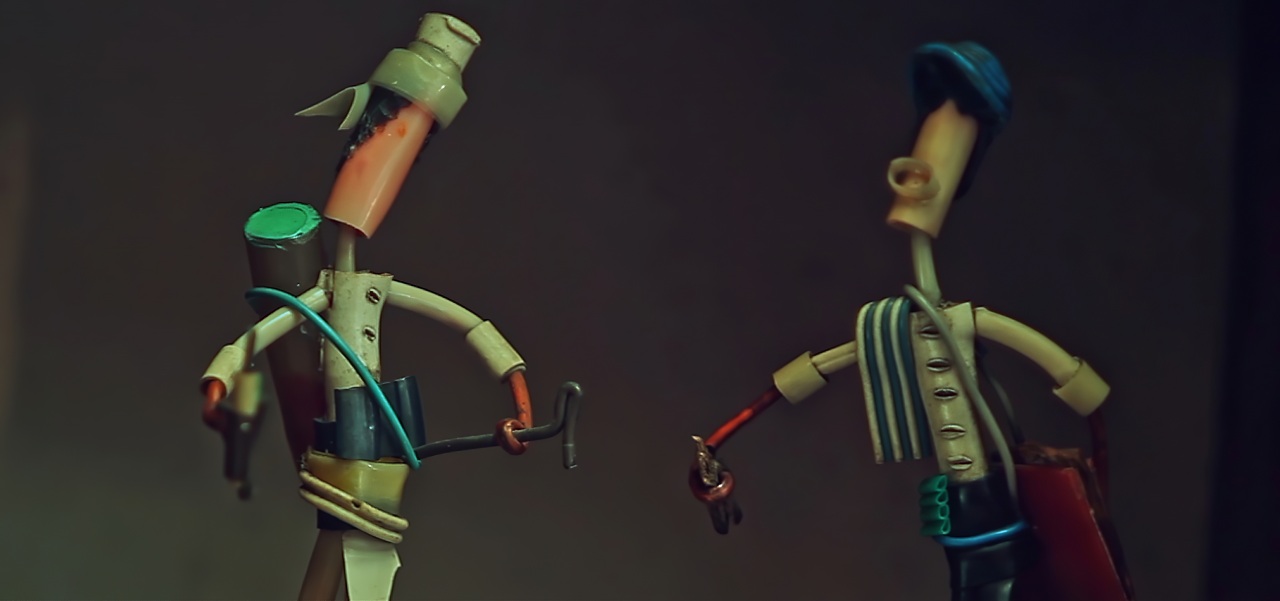
Belgeselin tüm görsel anlatımı basit ve doğrusal. Stop motion bölümünde aydınlatma ile ilgili bir sorun var. Bebeklerin yumuşak hareketleri ve duyguları iyi yansıtılmamış.
Filmin içeriğinde yeni bir şey yok.
Filmin yapısında, anlatıda ve yönetmende bir bütünlük gözleniyor. İyi denebilecek derecede sembolik ve nostaljik görüntüler kullanılmış : evin çatısındaki kedi, tekne ve bisiklet ….
Kuklaların kendileri çok güzel ancak animasyon dünyasına girdiklerinde kuru ve ruhsuzlar.
Ancak stop motion bölümü, oyuncak bebeklerin cansız dünyası ile yaratıcısı arasında bir köprü olmayı başarmış.
Yönetmenin Görüşü
Değerli eleştirileriniz için çok teşekkür ederim. İzninizle sırasıyla birkaç hususa ve sorularınıza cevap vermek isterim. Tabi ki bu sorular bakış açısıyla değişebilen subjektif yorumlar ama film dediğimizde böyle bir şey, her bakan kendi çerçevesinden değerlendiriyor.
Öncelikle filmde neden çocuklar yok sorunuzu yanıtlamak isterim. Çünkü bu film, çocuklar üzerinden oyuncağı, oyunu anlatan bir film değil. Bu film Sabahattin Usta gibi küçük atölyesinde figürler yapmaya çalışan, kendi sanatını, kendi çocuksu yanını bu şekilde ortaya koymaya çalışan insanların 1930’lardan bu yana Türkiye’deki hayat şartlarıyla mücadelesinin bir panoramasıdır. Yani bu film toplumsal bir panorama yaratmayı amaçlıyor. ‘Neden böyle oldu? Bu değerlerimize daha fazla sahip çıkabilir miydik? Bu insanlar şimdi neredeler’i sorguluyor. Türkiye’nin şartlarını ve Türkiye’de el sanatıyla oyuncaklar üreten insanları bir özne, bir kahraman üzerinden ortaya koyuyor. Bu sebeple zaten isminin sonunda “Saklı Yadigarlar” yazıyor. Çünkü bu insanlar bilinmiyor. Bu ülkede kendi küçük atölyelerinde sessizce kayboluyor. Amaç onların seslerini duyurmak, yaptığı figürlerle çocukların nasıl bir etkileşim halinde olduklarını, oyunu ya da oyuncağı anlatmak değil. Ki siz de hak verirsiniz. Belgeselde ya da herhangi bir filmde odağı dağıtmamak önemlidir. Bir filmin bir ana fikri, sorusu olmalıdır. Yoksa film pusulasız, okyanusun ortasında kaybolan bir kayık gibi dalgalarda savrulup durur. Bu sebeple belgeselde çocukların konuşması konu 1940’lar, 1960’lar, 1980’ler Türkiye’si iken çok mantıksız olurdu. O dönemleri bilmiyorlar, yaşamadılar. Biz de o sebeple o dönemde çocuk olan yetişkinleri konuşturduk.
İkinci olarak figürlerin animasyonları ruhsuz yorumunuza cevap vermek istiyorum. Bu çok sübjektif bir yorum teknik anlamda bir dayanağı var mı onu da bilemiyorum çünkü detaylı bir açıklamasını göremedim. Ama animasyon anlamında, gerçek zamanlı bir animasyonu yapmak gibi bir hedefim hiç olmadı ve zaten eldeki figürlerle de yapmak mümkün değildi. Çünkü figürlerin animasyona uygun bir iskelet sistemi yok. Avuç içi büyüklüğündeler ve sert inşaat telinden bükülmesi zor tek parça bir iskeletleri var. Bu sebeple gerçek zamanlı bir animasyon yapmak bu malzemeyle hiç kimse için olanaklı değil. Bununla beraber özellikle Sabahattin Ustanın figürlerinin orjinallerini bozmadan kullandım. Çünkü yönetmen olarak filme uygun olanın bu olduğuna karar verdim. O orijinal dokuyu bozmak istemedim. Çünkü onları özel kılan o dokudur. Stop-motion tekniğiyle profesyonel işler reklamlar çeken biri olarak bunun bir hata değil bir tercih olduğunu belirtmek isterim. Animasyonlarda ışık eksik diyerek ne demek istediğinizi anlamamakla birlikte bunun da sübjektif bir bakışla söylenmiş bir söz olduğunu düşünmekteyim. Işık yok demek için planların grenli olması ya da göremeyecek kadar az ışıkla yapılmış olması gerekir. Kaldı ki bu da teknik bir tercihtir.
Son olarak film, bu miras ortadan kalkacak demiyor. Bunu dile getiren sanatçının kendisidir, belgesel ise Sabahattin Usta’nın bu kaygısını yansıtmaktadır. Çünkü belgeseller objektif olmakla yükümlüdürler. Sanatçının otoportresini çıkarırken onun söylemlerine sadık kalmak gereklidir. Öte yandan el sanatıyla yapılan her şey kendine özgüdür. Taklitleri aslını yaşatsa da aynısı olmaktan uzaktır. Kopyalar, ruhunu kaybetmiş kopyalar gibi salınırlar. Bu fabrikasyon bir ürün olsaydı dediğinizde haklı olabilirdiniz. Ama nasıl ki, Picasso, Van Gogh kopyalanabilir ama asla kopyaları onlar gibi özgün olamazsa Sabahattin Usta’nın figürleri de kendine özgü bir el sanatıdır. El sanatına dair her şeye bir sanatçı olarak saygı duymayı önemseyen biri olduğumu belirtmek isterim.
This film is a hybrid or mixed documentary. A documentary combining the life story of a creative puppet maker and the combination of Stop Motion animation. Maybe it can be called a docu fiction. To a large extent, the director has been able to accompany us with the life story of an artist and creative person. The film is aimed at adults who have lived for many years, and jobs and characters that are nostalgic for them. An ethnographic narrative whose consequences for people vary with the changing social environment.
And of course I do not agree that this legacy will disappear with the death of the main character. Because these dolls are not difficult to make, even the spirit that governs them is not interesting to modern humans. The story of the film is simple, the wired puppet characters help their creator to tell us the story of his life.
The best part is where the wire doll plays chess inside the boat. And he brings us into the game of the old man in the real world, as if the chess scene is the scene of life and game of life.
By the way, why don’t we see the children in this movie and don’t hear their opinions about these dolls? Is it not the existential philosophy of toys and dolls, children and games? Even if this movie is for adults, it would be better if the children talked about this doll.
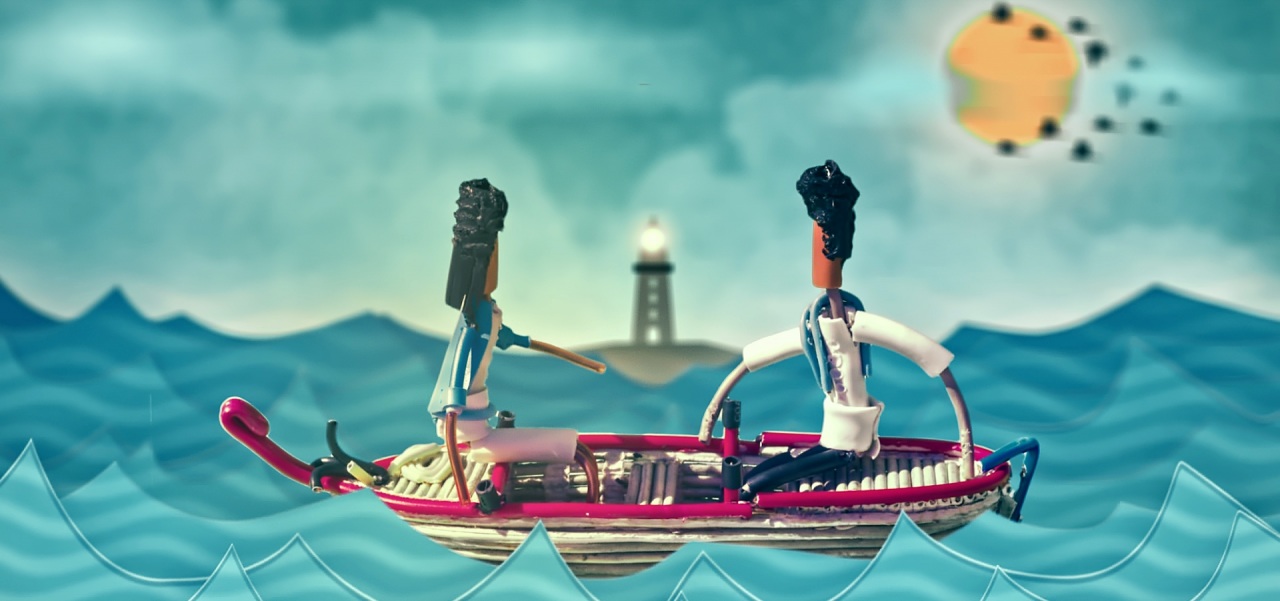
The whole visual narrative of the documentary is simple and linear. There is a problem with the lighting in the stop motion section. The smooth movements and emotions of the dolls are not done well. There is nothing new in the content of the film.
The structure of film, almost integrity is maintained in the narrative and the director. Good symbolic and nostalgic images are used. Cat boat bike on the roof of the house…
The dolls themselves are lovely, but when they enter the world of animation, they are dry and soulless. The stop motion section has been able to be a bridge between the lifeless world of dolls and its creator.
Director’s View
Thank you very much for your valuable comments. With your permission, I would like to answer a few issues and your questions, respectively. Of course, these questions are subjective comments that can change from one perspective to another, but when we say “film, it is something like this, each viewer evaluates it from his/her own perspective”.
First of all, I would like to answer your question why there are no children in the movie. Because this movie is not a movie about toys and games for children. This film is a panorama of the struggle of people like Master Sabahattin, who are trying to make figures in their small workshop and trying to reveal their own art and their childlike side, with the living conditions in Turkey since the 1930s. In other words, this film aims to create a social panorama. It questions that ‘Why did this happen? Could we protect more of these values? Where are these people now?’. It reveals the conditions of Turkey and the people who produce toys with handicrafts in Turkey through a subject, a hero. For this reason, it already says “Hidden Relics” at the end of its name. Because these people are unknown. In this country they are quietly disappearing in their own little workshop. The aim is not to make their voices heard, not to tell how the children interact with the figures they make, the game or the toy. Which you are right, in a documentary or any film, it is important not to distract from the focus. A movie should have a main idea, a question. Otherwise, the film will drift in the waves like a boat lost in the middle of the ocean without a compass. For this reason, speaking of children in the documentary would have been very illogical when the subject was Turkey of the 1940s, 1960s and 1980s. They do not know those times, they did not live. That’s why we had adults who were children at that time talk.
Secondly, I would like to respond to your ‘soulless’ comment on the animations of the figures. This is a very subjective comment, I don’t know if it has a technical basis because I couldn’t see a detailed explanation. But in terms of animation, I never had a goal to make a real-time animation and it was not possible to do it with the figures at hand anyway. Because the figures do not have a skeleton system suitable for animation. They are the size of a palm and have a one-piece skeleton of rigid construction wire that is difficult to bend. For this reason, it is not possible for anyone to make a real-time animation with this material. However, I especially used the originals of Master Sabahattin’s figures without damaging them. Because as a director, I decided that it was the right fit for the movie. I didn’t want to spoil that original texture. Because it is the texture that makes them special. As someone who shoots professional ads with the stop-motion technique, I would like to point out that this is not a mistake but a choice.
Although I do not understand what you mean by saying that there is a lack of light in animations, I think that this is also a phrase said with a subjective view. To say there is no light, the plans must be grainy or made with too little light to see. After all, this is a technical choice.
Finally, the film does not say that this legacy will disappear. It is the artist who expresses this, and the documentary reflects this concern of Master Sabahattin. Because documentaries are obliged to be objective. It is necessary to be faithful to the artist’s discourses while making a self-portrait of the artist. On the other hand, everything made with handicraft is unique. Although imitations keep the original alive, they are far from being the same. Copies sway like soulless copies. You might be right when you said if this was a fabricated product. But just as Picasso and Van Gogh can be copied, but never as original as they are, the figures of Master Sabahattin are a unique handicraft. I would like to state that I am a person who cares about respecting everything about handicraft as an artist.



